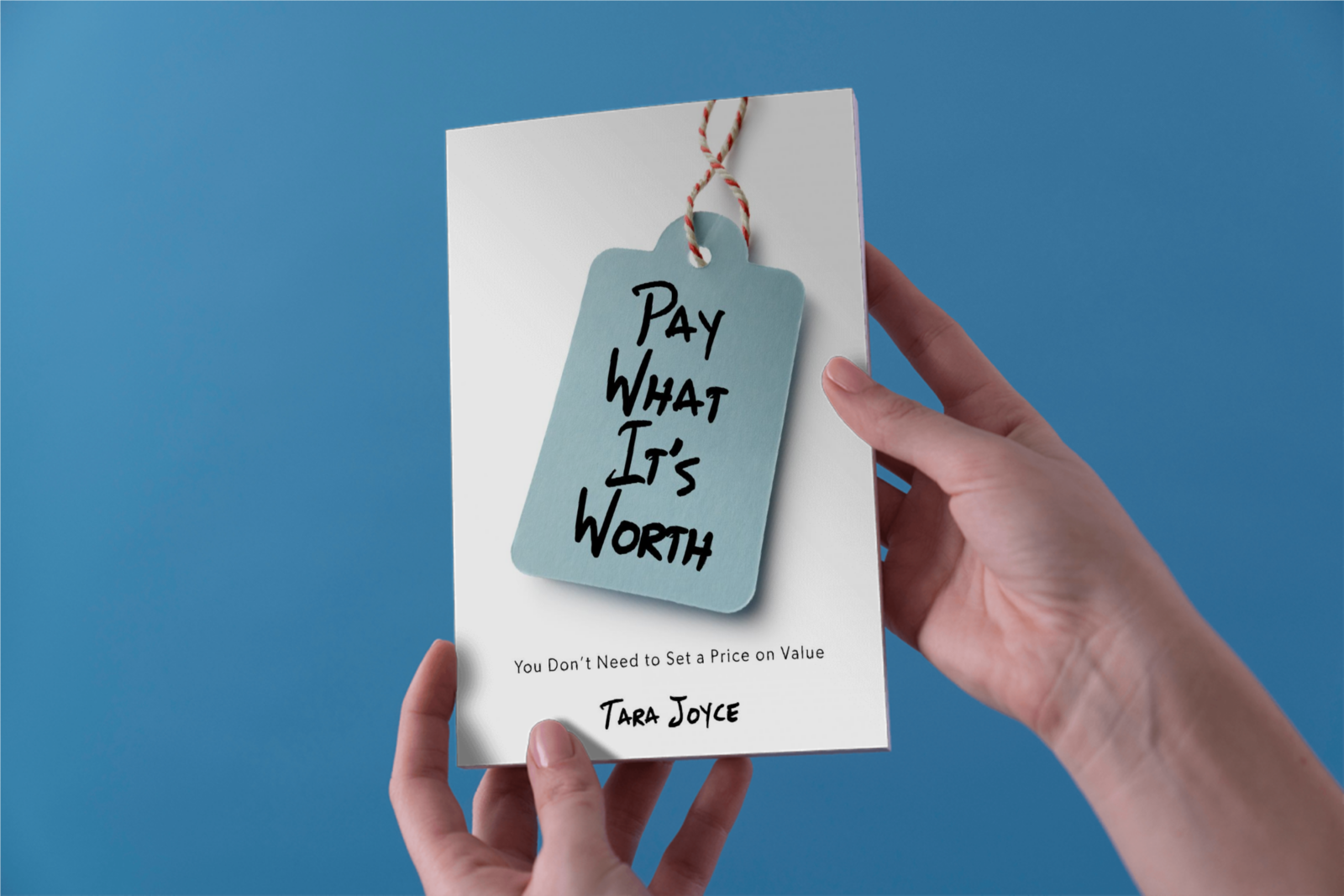
by Tara Joyce | May 28, 2014 | Cultural Creativity

I’ve got this tendency in communication, maybe you have it too… I sometimes take on more responsibility than is rightfully mine.
You see, I am good at communicating. It comes naturally. I like it and because of this, I sometimes take on the job of doing it, even when it’s not mine to have.
Sometimes, I take on the job of valuing your words and expressions when you are not. Sometimes, I choose an unequal exchange.
An equal exchange
But here’s the thing, the truth about empowered communication and empowering myself through communication — sometimes, it’s best if I don’t listen. Sometimes, it’s best if I don’t acknowledge what’s being communicated.
If you’re communicating in a constructive way, then listening and recognizing you is my priority. But, if you’re not holding up your end of the communication bargain and being responsible for your role in the relationship, then your words lose their value. For you are no longer valuing them.
Your carelessness with your communication is not my responsibility.
Shared responsibility
What’s mine is my responsibility towards empowered communication and my need for co-creative communication.
What’s mine are maintaining my boundaries around what is our shared responsibility in our exchange.
valuing my words & expressions = valuing your words & expressions
Both are my job. And both are yours. That’s how we co-create communication together.
photo credit: Stephen – 10on12

by Tara Joyce | Sep 19, 2013 | Personal Branding

The more value found in my signal, the stronger it will be.
I think of my signal as how I am perceived by others. Like a radio signal, my signal appeals not to everyone but to certain people.
I think of my value as how I am of service to others. The more I understand and grow it, the easier I can communicate it, and You can connect with it.
So I tune in. I listen to the marketplace and my community for ideas on what I’m signifying with my brand. And I listen to myself.
Who is tuning into me? What am I tuning into? Are there any discrepancies in what I am are hearing and experiencing internally and externally?
When I work on knowing my value, I work on “developing my authentic voice”. My true voice expresses what’s inside me, and my brand. And the more She shares, the stronger my signal is, and the more of You it will reach.
My signal holds a lot of power. So I need to be careful with it, my communications. I need to be mindful of how I connect with you, and how I share my passions, my values, and my talents with you.
When I find I’m not communicating to add value, it’s wise to choose not to broadcast. Thoughtful communications are what serve me and grow my signal stronger.
photo credit: BasicallyAdvanced

by Tara Joyce | Jul 16, 2013 | Cultural Creativity

It’s hard for me to say No sometimes.
Sometimes it feels like I can’t just say it, even though I need to.
It feels wrong.
It feels like it’s not an option.
Despite what I feel, the problem isn’t that I want to say No, it’s me deciding it’s wrong to say No.
When I feel it is wrong to say, my communication ends up reflecting this.
I become unclear, and/or rejecting, and our connection suffers as a result.
But, when I stay in a place where I feel there is no problem in saying No, my communication feels all the more open — to me and the person I am connecting with.
By acknowledging and working with my resistance to saying No, I am able to practice staying light and responding clearly with why no is my answer, without remorse.
I can feel that I am respecting the person I’m communicating with, AND respecting myself as the same time.
I am respecting myself enough to say No when I mean it, and I am respecting you enough not to say Yes when I don’t.
I am me, I trust me and I know what’s best for me. This is what I am acting on and this is what I can feel good communicating.
No matter how you choose to respond.
photo credit: fotogail

by Tara Joyce | May 3, 2011 | Featured, Pay What It's Worth Pricing
As a practitioner of Pay What It’s Worth pricing, I see the business approach of asking a client to pay-what-they-can as a very different thing. Each approach communicates very different things about your brand, and the exchange you seek. Care to explore this with me deeper?
Exploring Pay What You Can Pricing and What It Communicates
As a business owner, communicating that others are free to pay-what-they-can for your work positions you as willing to sell your work in charity. (You may want to consider at this point whether your business, or your clients, is, in fact, a charity.) In many cases neither party is a charity, so what you are truly communicating is that it’s okay for a client to pay whatever they *think* they can, and that you are open and lenient to allowing others to value your work at less than it’s worth, so long as the person deems they need it.
Now this is only my opinion, but I feel if you are responsible enough to identify a need and seek a solution for it, than you are also responsible enough to find the means for fulfilling that need — i.e., if you want it, you need to find a way to get it. I see no long-term value in not holding people (and businesses) responsible for fairly paying for a professionals energy and time. If you can determine that you want the service, and you go out and seek it, then you need to have a plan for how you are going to obtain it fairly.
By stating that your clients need only to pay-what-they-can, you are first, and foremost, communicating that you see them as lacking (you can’t afford what I think this is worth so I’ll let you pay me what you can), and encouraging them to act in this scarcity mindset. Secondly, you are encouraging them not to consider the long-term value of what they are receiving but instead to focus on what they *think* they can afford in the moment.
An initial question I would ask about this approach is: What leads you think that your potential clients have a scarcity of money and need to pay only what they can? Secondly: Of what benefit is it to encourage scarcity thinking around money? Do you see money as scarce? How do you think this scarcity message might affect the mindset of your buyers when they pay you? Unknowingly, you are positioning your work to be undervalued and attracting clients who are looking for a deal, rather than attracting clients who seek a fair value exchange.
With Pay What You Can (PWYC) pricing, the value exchange is focused on “what I can get”, where you are letting the customer receive what they need and pay what they feel they can afford, despite what the work may be worth. Communicating this message may be doing both your business and your potential clients a disservice, unless your undertaking an act of charity.
Exploring Pay What It’s Worth and What It Communicates
As a business owner, positioning your business offerings as Pay What It’s Worth (PWIW), you are communicating that you are willing to sell your work at it’s perceived value, as determined by the client. With this position, you are challenging your client to think deeply and honestly about the value you bring to their business and to pay you accordingly. You are not communicating to your potential client that they cannot afford your services. If anything, you are communicating that you trust the client, and the excellence of your work, enough to let them determine its value. Pay What It’s Worth pricing makes no judgments about the financial abilities of the parties involved. With this strategy, you are essentially challenging potential clients to look at the value exchange occurring, and to focus not on what they can get, but what they can give in gratitude for what they have received. You are also asking them to consider the standard prices for things, and question whether those market prices accurately reflect the true value of what they are receiving from you.
You are not judging what others can and can not afford, you are simply stating that if you agree to work with someone and they employ your services, you trust that they will pay you fairly for what you provide to them. You are supporting both your Self and your clients in truly and honestly identifying and determining a value for what each party contributes to the exchange, monetary and otherwise.
PWIW is Not PWYC
There are distinct differences in what each pricing system communicates — about your business and work and about the people who can best benefit from it. What message do you want to send?







